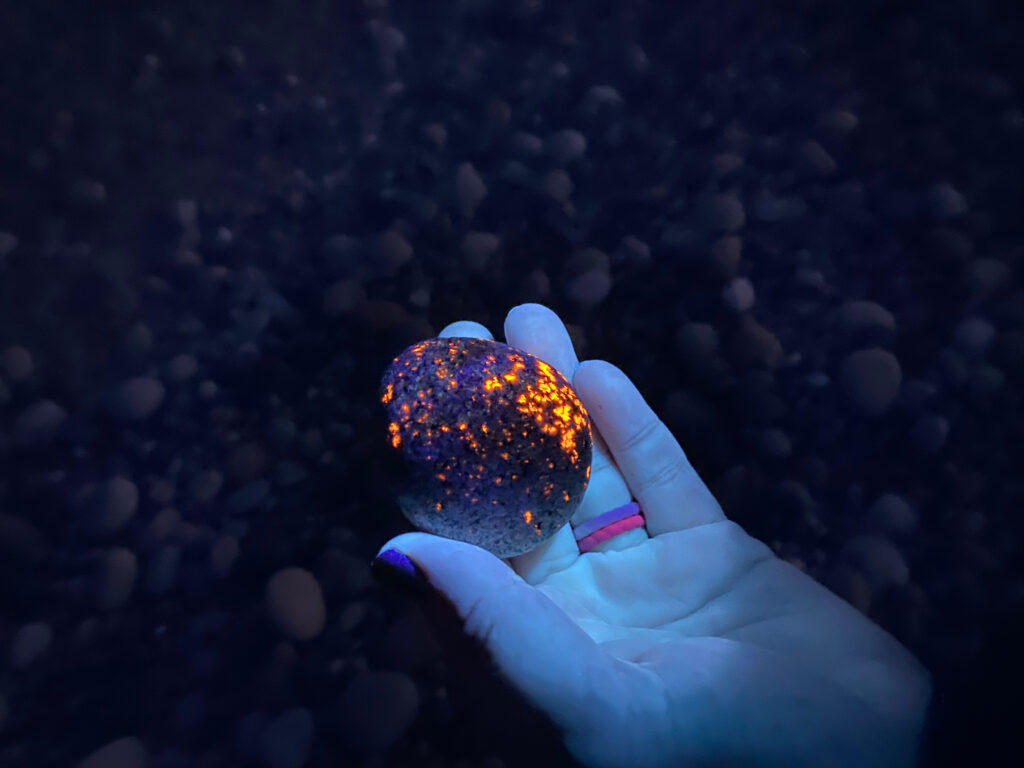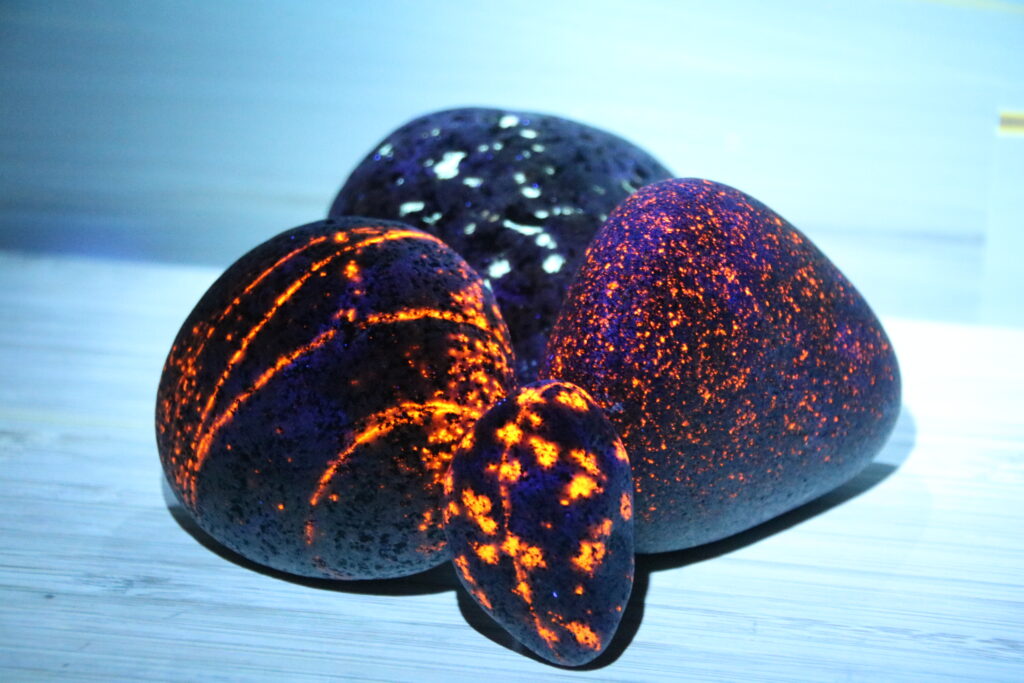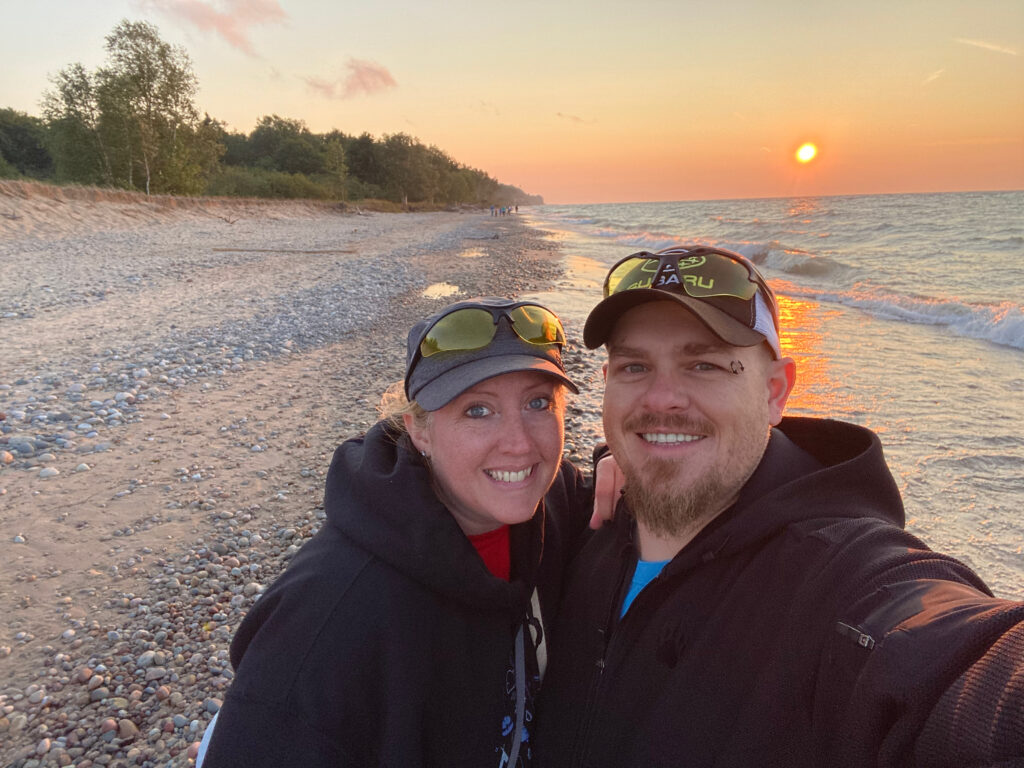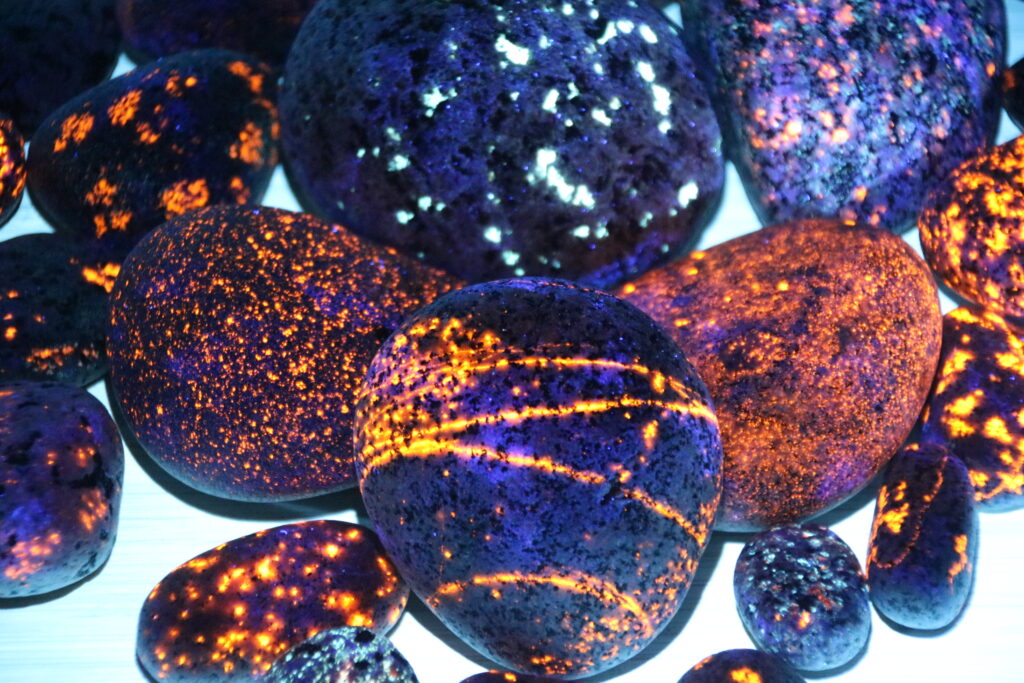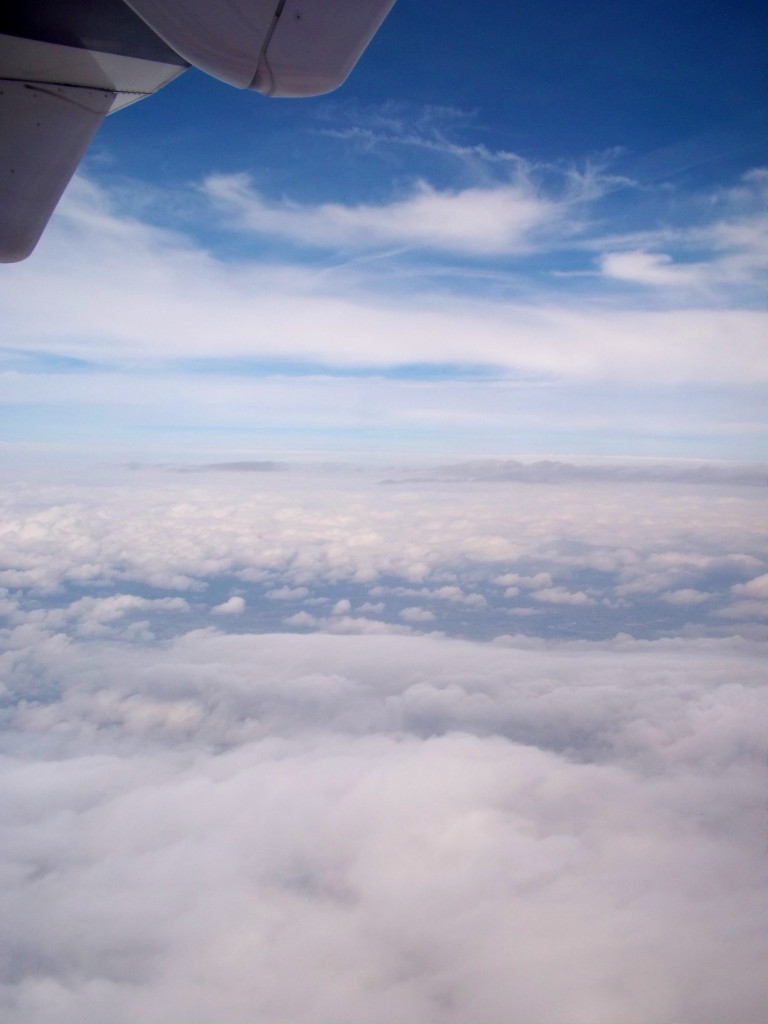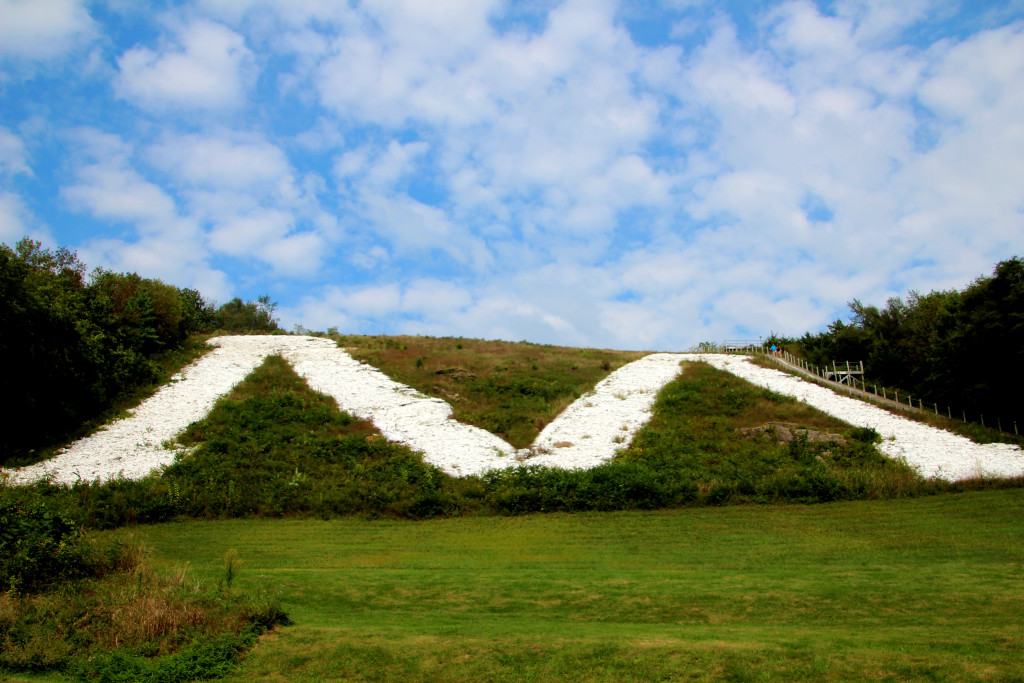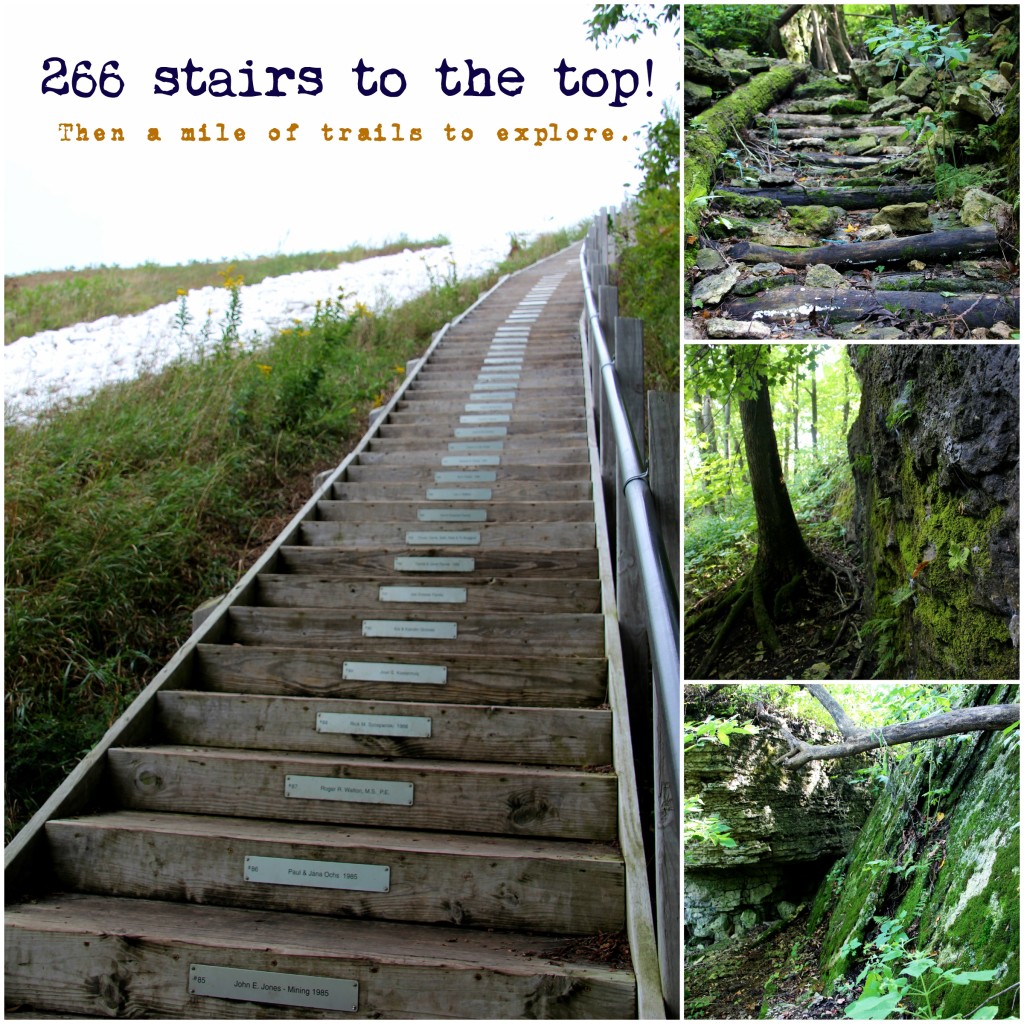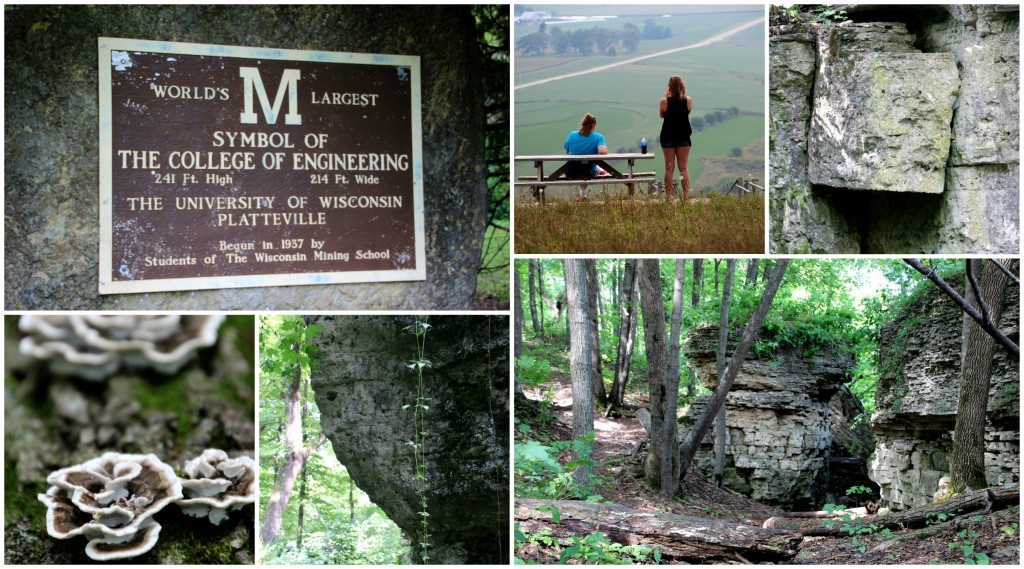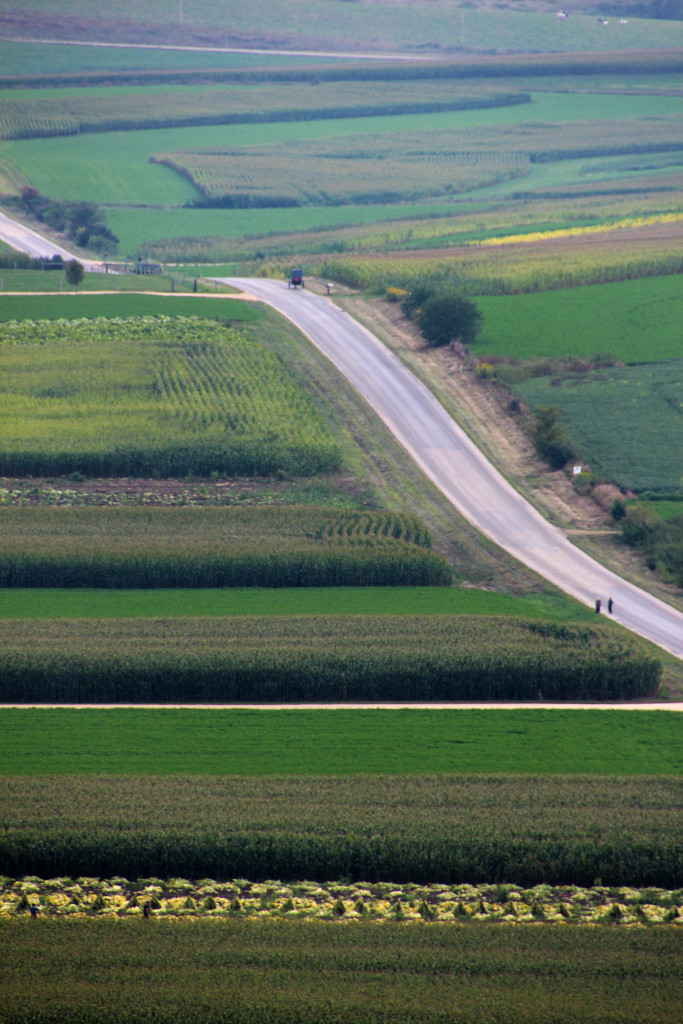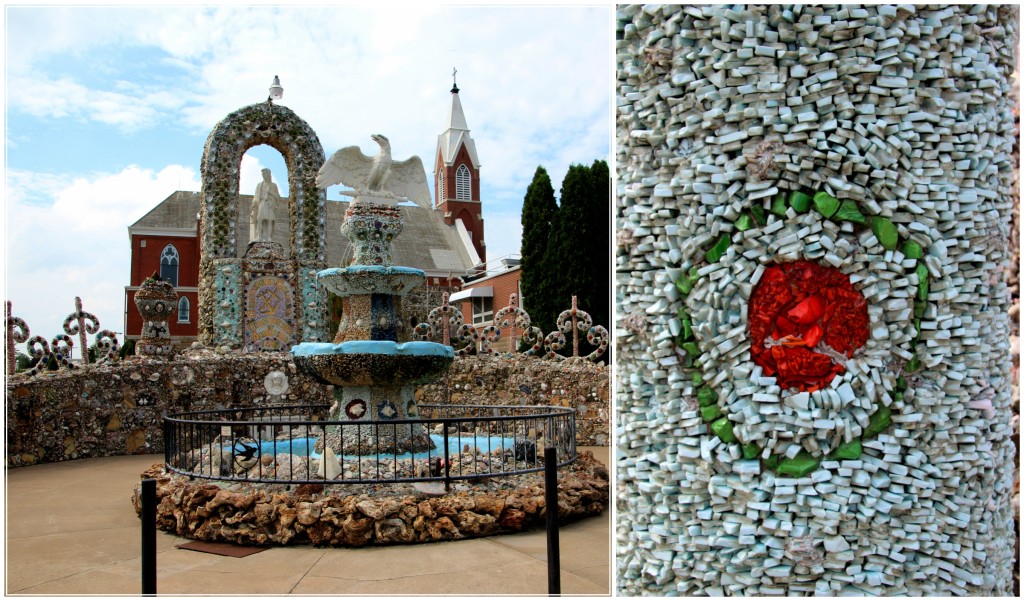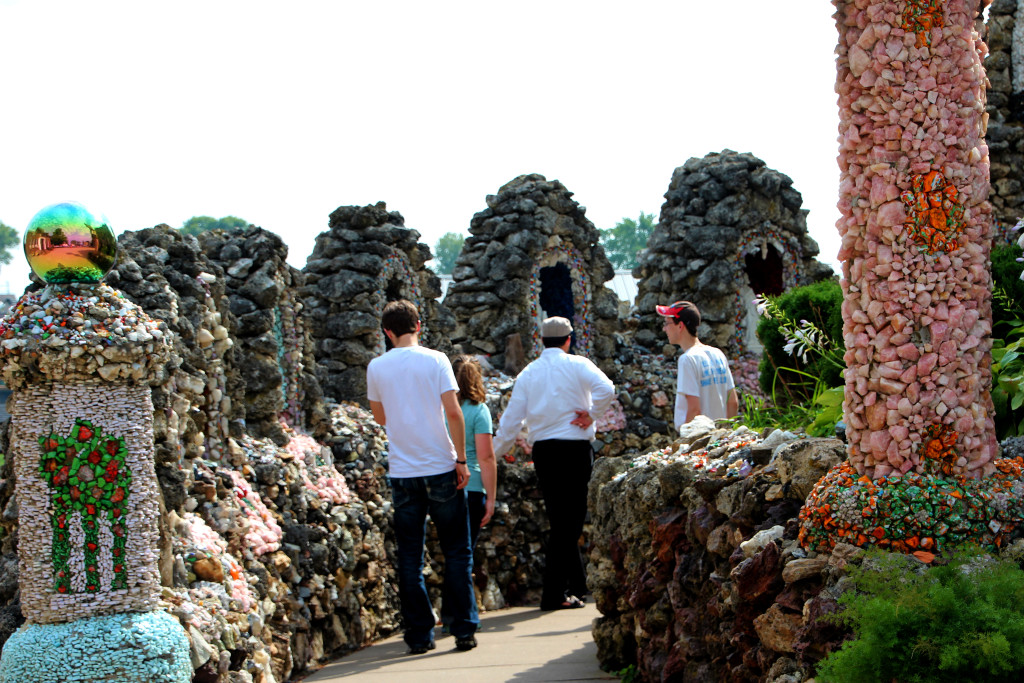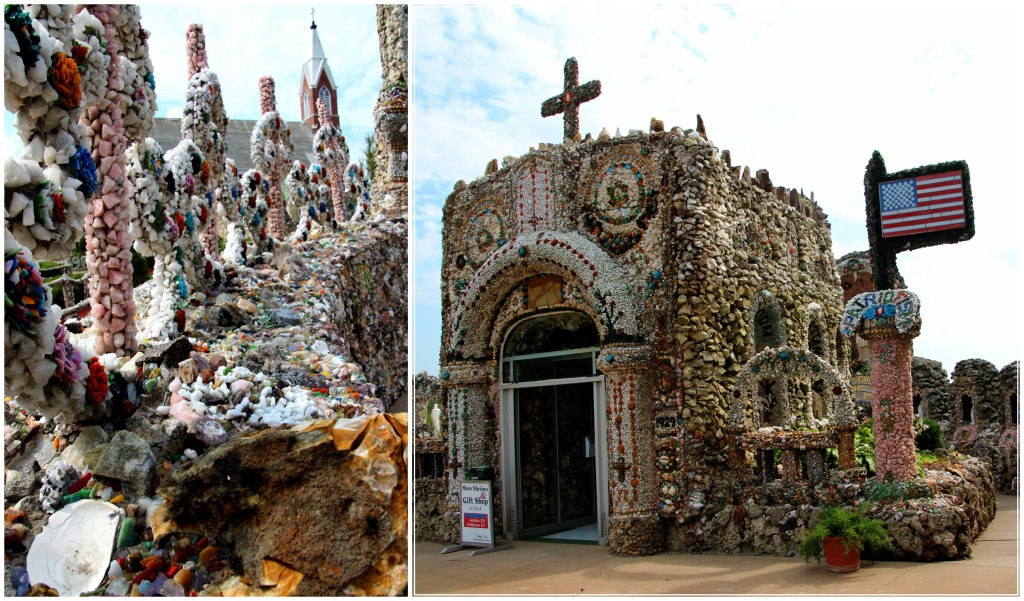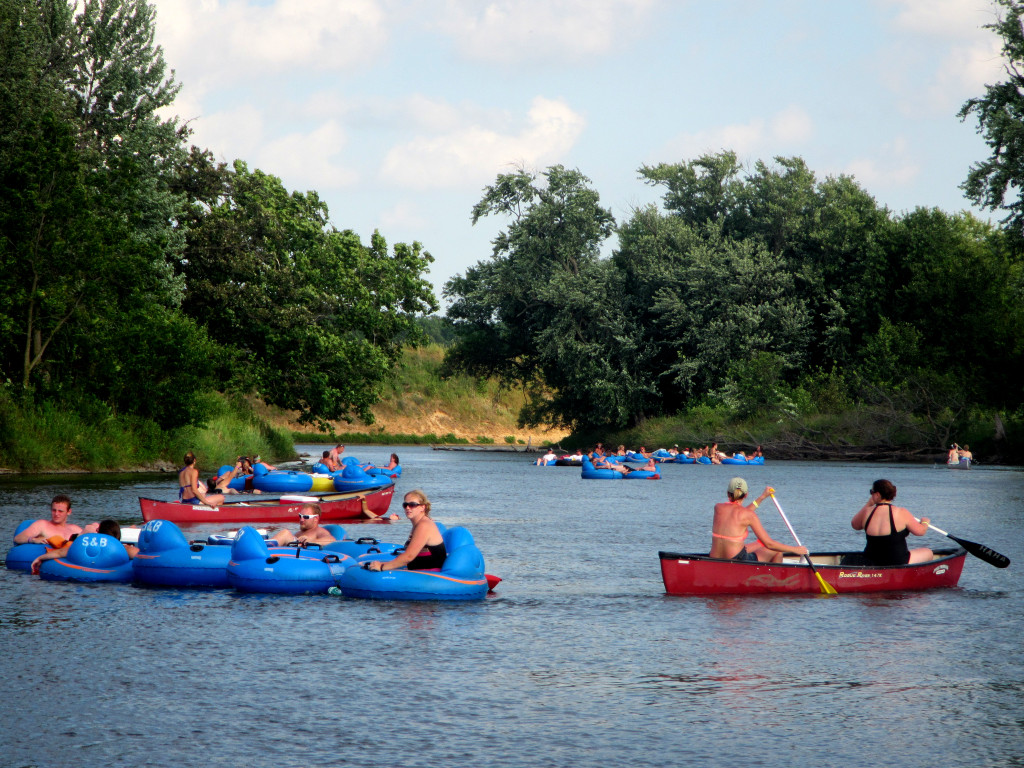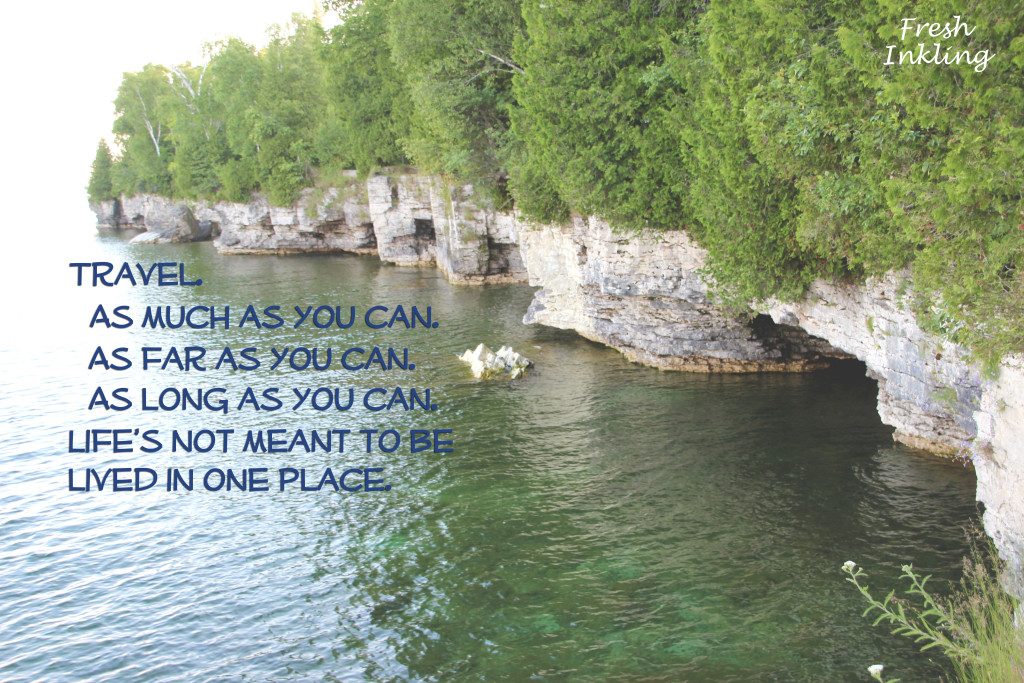By Dena Nechkash
It is almost magical scanning the rocky beaches of Lake Superior in the dark, hoping to find a spark of vibrant orange flashing under the UV light. With the waves lapping the shoreline in a calming rhythm, it is a relaxing hide-and-seek game set in one of the most beautiful regions of the United States. Once you find that first one, you will want to keep hunting for more!
My husband and I spent two weekends hunting for yooperlites in Michigan’s upper peninsula this summer and had a lot of success! It is very easy to do, but we came across many people who seemed to have trouble finding them or only found one. If armed with the right tools and knowledge, you too can successfully yooperlite hunt in Michigan!
What is a yooperlite?
Yooperlites are fluorescent sodalite-rich syenite rocks first discovered in 2017 by Erik Rintamaki of Michigan. The sodalite glows bright orange, similar to red-hot molten lava in a volcanic rock, when flashed with long wave ultraviolet light. While most commonly found on the shores of Lake Superior, they have been found on Lake Michigan’s shores, in gravel pits and even in Tennessee due to glacial movement. They are a fairly new discovery and thus a very popular family activity during the recent social distancing recommendations.
How do you find them?
Yooperlites are found on the shores of Lake Superior (among other places, such as Minnesota and Wisconsin) by scanning the rocky Great Lakes shores with a powerful UV (black) light. We found great success with our Alonefire brand light – a budget-friendly high powered black light – with specs of 10 watt, 365 nm. It uses rechargeable 18650 Li-ion batteries, which we would go through approximately one an hour. We saw a wide variety of lights being used, some with better luck than others. We also would continue to hunt where others had just been and still found yooperlites. Whether that was due to the differences in equipment, the shuffling of feet bringing new rocks to the surface or just pure luck, we weren’t really sure.
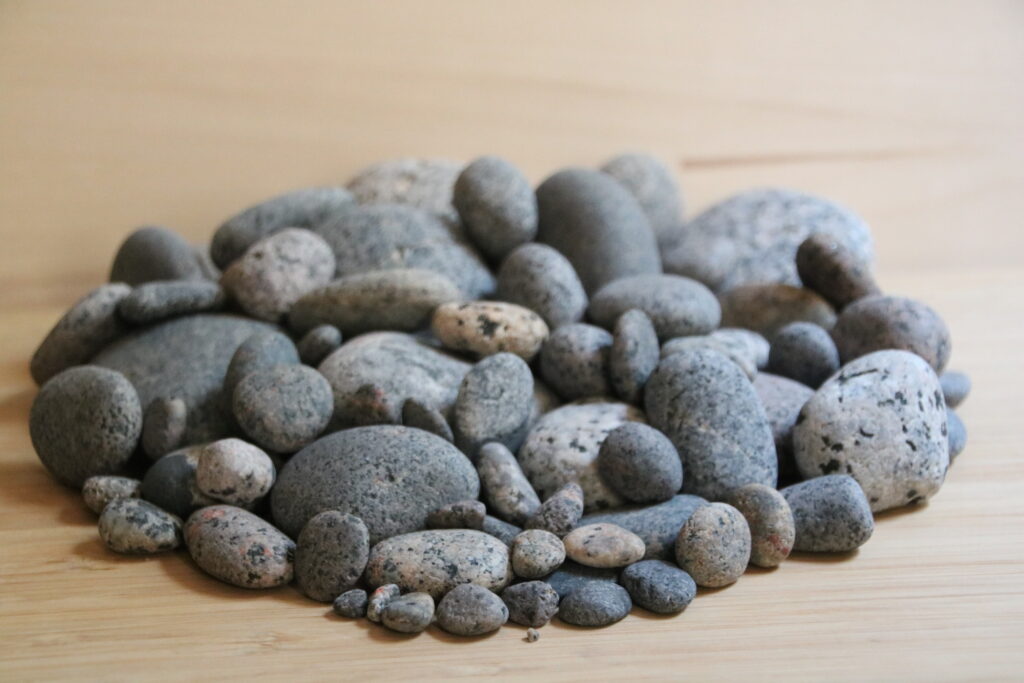
I recommend also purchasing yellow UVA 400 safety glasses to protect your eyes. Long exposure to these high-powered UV lights is not healthy for your vision. We didn’t see anyone else wearing protective eyewear, but it was a risk we weren’t taking, and the glasses really weren’t that expensive for providing peace of mind.
There are a few techniques you can use to scan the beaches with your UV light: side-to-side sweeping motion or the figure-8 motion. Try them both and decide what works best for you. I ended up switching it up based on obstacles and terrain. The sweeping motion from side-to-side seemed to work well for shorelines with an even scattering of rocks, while the figure-8 method worked better for the piles of rocks. The goal is to slowly scan the beach a few feet in front of you and quickly assess if the items that light up are a yooperlite or something else.
You will have many different objects catch the UV light and glow. Fossils usually glow bright white. Feathers and bird poop are usually a blue glow. Some brown and white stones reflect the UV light, too, but it is pretty easy to tell that they aren’t what you’re looking for. There are some algae-covered rocks that glow red or deep orange, but they are pretty easy to differentiate from yooperlites and their glow dies as soon as they dry. The yooperlites are a very brilliant orange, almost like flames covering the rock. Some yooperlites have also been found with a white or pale blue color that glows instead of the orange.
The yooperlites can be a variety of sizes. We found them as large as a mango and as small as a pinhead. Scan the dry sand further up the beach as it is often ignored. Most of the popular beaches are hunted almost every single day, but new yooperlites wash up regularly, so be sure to check the wet sand areas well. Also scan in the shallow water and see if any are near the shore. We did find several close to shore, too!
Please, please, please abide by all posted signs and only hunt via access through public property. Do not trespass on private property to access the lakeshore. Do not ruin this hunting experience for future hunters. There are plenty of public access points, such as Grand Marais (do not hunt on the Pictured Rocks National Lakeshore), Lake Superior State Forest Campground, Muskallonge Lake State Park, Two Hearted River State Forest Campground, Crisp Point Light House, Vermillion Point Nature Preserve and Whitefish Point Light Station, to name a few. I haven’t hunted on the Keweenaw Peninsula yet, but there are some public beaches known for yooperlites there, too.
When you are choosing which beach to try, keep in mind that not all beaches are accessible by paved road. And the rough dirt roads are a challenge for all-wheel-drive vehicles, especially in the rain, which happens a lot up there. If you get stuck on one of the dirt roads, you won’t have cell phone service to call for help and when help arrives, it is very costly because of the conditions and the time it takes to get there. Make good decisions about your destination. Having an atlas of Michigan helps, too, in case you need directions and can’t connect to the internet. It saved us more than once!
Also, please know that Michigan limits the amount of rocks you can harvest in a year to 25 pounds per person. Please respect this and only keep up to 25 pounds of rocks in Michigan in one year. Don’t worry, it takes a LOT of rocks to add up to 25 pounds!
Tips & Tricks
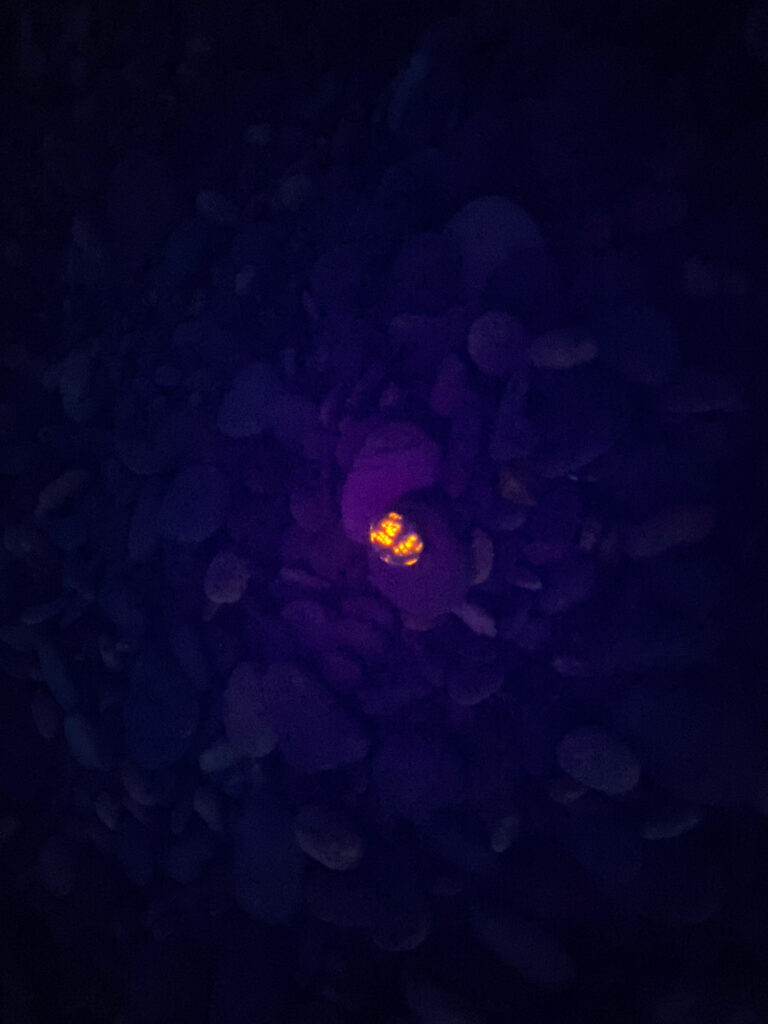
- Use the correct equipment.
- UV light
- Yellow protective glasses
- Rock collecting bag
- Dress comfortably for a walk on a rocky beach at night.
- Wear layers, it can get chilly at the water edge.
- Wear non-slip sandals or rain boots. Plan to get your legs wet.
- Check the forecast before heading out. Do not continue to hunt during a storm.
- Scope out the beach in daylight to know the terrain and plan for the equipment you may need.
- Get there early! It’s become a very popular activity and the beaches are all filling up with hunters at sunset.
- Avoid crowded beaches or walk a distance from the parking area to find an untouched area to hunt for the best success. We found that walking to a distant part of the beach at sunset and then waiting until it is dark enough to walk back gave us an advantage.
- Leave a glow stick at the entrance to the beach so you can find your way back. Please take the glow stick with you when you leave!
- Bring a backpack for your supplies, like water. And actually DRINK water while hunting.
- Consider having a separate rock hunting bag (I use a modified lingerie wash bag, which I added a crossbody strap to; my husband has one with a carabiner clip added).
- If you plan to dig in the rocks, bring gardening trowel or small rake to help.
- Keep your UV light moving, sweeping the beach.
- Secure your light to your wrist so it doesn’t fall into the water.
- Search all parts of the beach: dry sand, wet sand, shallow water.
- Avoid obstacles like fallen trees or large boulders by turning on your flash light occasionally to check the terrain ahead of you.
- Give your eyes time to adjust to the UV light. It will seem very dim at first.
- When you pick up the yooperlite, give the rocks around it a shuffle. Sometimes there are others nearby.
- Watch behind you. Sometimes your footsteps uncover yooperlites.
- Take it slow. You’ll see lots of other things glow in the UV light, but you’ll know when you found a true yooperlite.
- Visit the beaches after big storms for better hunting. The big waves wash up more of the yooperlites.
Packing Checklist
- UV light
- Protective glasses
- Drinking water
- Rock collecting bag with small holes to let the sand fall through
- Fast-dry clothing
- Water shoes or rain boots
- Backpack
- Bug spray
- Headlamp or flash light
- Towel (for cleaning up when get to the car)
- Bag for sandy shoes (also for at the car)
- Extra shoes (who wants to drive in sandy shoes?)
- Friend – because two sets of eyes are better than one!
- Optional, based on the weather: rain jacket, stocking cap, gloves
While yooperlite hunting is strictly a night activity, there is a lot to see and do in Michigan’s Upper Peninsula during the day, too, including museums, lighthouses, waterfalls, state parks, national lakeshores, agate and fossil hunting, hiking or biking, scenic drives or just relaxing on the beach. We were able to cram quite a bit into our two weekends up there. We made it to Grand Marais Light House, Tahquamenon Falls State Park, Crisp Point Light House, Muskallonge Lake State Park, Whitefish Point Light Station, Two Hearted River State Forest, Curley Lewis Memorial Highway Scenic Drive, Point Iroquois Light House, Soo Locks, and Vermillion Point Nature Preserve.
This was actually our third trip to the U.P. this year! We made the trek to Munising and Marquette in winter to ice hike and check out the frozen waterfalls. They were spectacular! ANd we were able to get some great pictures because not many people venture out in the cold. You’ll have to fight the snowmobilers for hotel rooms, though!
NOTE: I am not affiliated with any of the companies or products I recommend in this article. I am simply sharing specifics that I personally have experience with.
